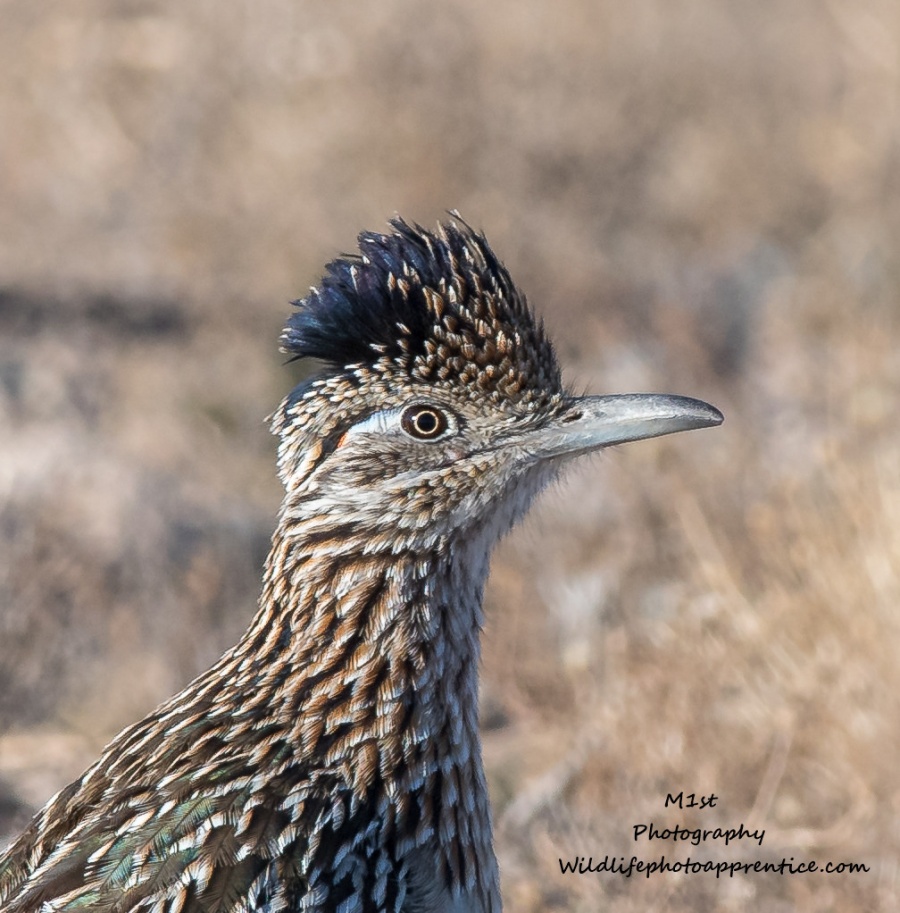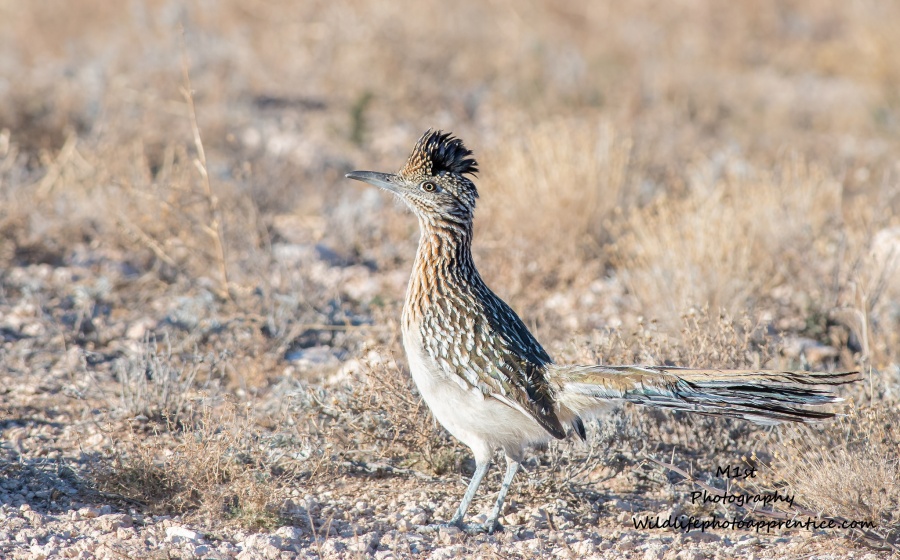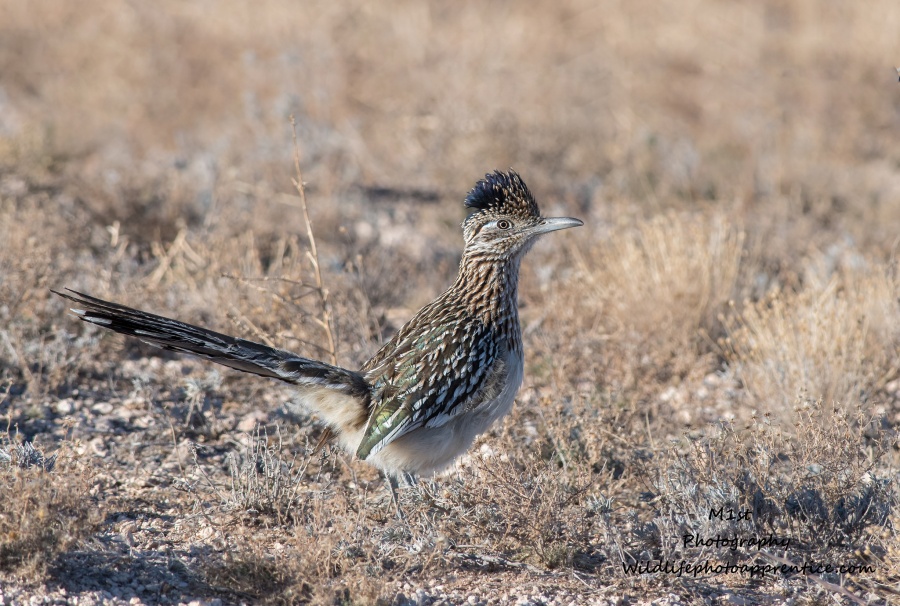Was out this afternoon looking for things to shoot. I didn’t come across Wile E Coyote but I did I come across a Road Runner or Chaparral. According to the Audubon website, the roadrunner is the most famous bird in the southwest, featured in folklore and cartoons, known by its long tail and expressive crest. The Roadrunner walks and runs on the ground, flying only when necessary. It can run 15 miles per hour, probably with much faster spurts when chasing a fast-running lizard or other prey. Its prowess as a rattlesnake fighter has been much exaggerated, but it does eat a remarkable variety of smaller creatures.

Roadrunners can be found throughout the southwest. They have a prefered habitat that includes deserts and open country with scattered brush. Most common in Sonoran desert and in other kinds of brushy country, including chaparral and Texas brushlands, in areas with a mix of open ground and dense low cover. At limits of range, found in dry grassland, forest edges, and limestone hills with scattered junipers.
Diet
Includes insects, reptiles, rodents, birds. Feeds on many large insects, plus other arthropods including scorpions, tarantulas, and centipedes. Also catches many lizards, snakes, mice, young ground squirrels, small birds (including baby quail and adult sparrows), sometimes snails. Eats some fruits (especially cactus fruit) and seeds.
Feeding Behavior
Usually hunts by walking rapidly, looking for prey, then making very rapid dash forward to catch prey in its bill. May leap straight up from ground to catch insects or birds flying over (has been seen catching hummingbirds this way).

Nesting
May mate for life, pairs defending territory all year. Courtship includes chases on foot, with frequent pauses to rest. One bird (either sex) approaches the other with stick or blade of grass, and drops it on the ground or gives it to other bird. In other displays, male runs away from female with tail and wings raised over back, gradually lowers wings; male wags tail from side to side while slowly bowing. Nest site is in dense bush, low tree, or cactus, usually 2-12′ above ground, rarely on ground. Nest is platform of sticks, lined with grass, leaves, feathers, sometimes with snakeskin or pieces of cow manure.

Eggs
3-5, sometimes 2-6. White to pale yellowish. Incubation is by both parents (male does more), about 20 days. Young: Fed by both parents; leave the nest after about 18-21 days. May begin catching own food soon after leaving nest, but still fed by parents up to another 30-40 days.
Young
Fed by both parents; leave the nest after about 18-21 days. May begin catching own food soon after leaving nest, but still fed by parents up to another 30-40 days.
If you live in the southwest, keep your eyes open and you might just capture some fun photos of a fascinating bird.
